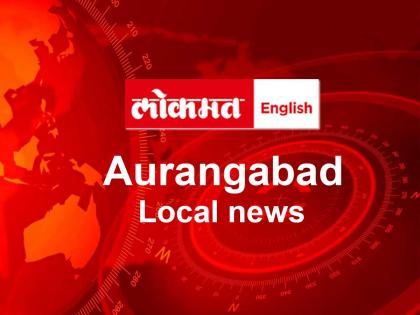Industries turning Kham and Sukhna rivers into chemical drains
By Lokmat Times Desk | Updated: November 12, 2025 22:35 IST2025-11-12T22:35:03+5:302025-11-12T22:35:03+5:30
Lokmat News Network Raj Patil Chhatrapati Sambhajinagar Around 100 to 150 industries are directly discharging untreated wastewater into the ...

Industries turning Kham and Sukhna rivers into chemical drains
Lokmat News Network
Raj Patil
Chhatrapati Sambhajinagar
Around 100 to 150 industries are directly discharging untreated wastewater into the Kham and Sukhna rivers, leading to alarming levels of water pollution and severe environmental damage in the adjoining areas.
According to industrial sources, only 25% of the effluent is treated through ETPs, STPs, and the Common Effluent Treatment Plant (CETP), while the rest is released into rivers and drains. Brahmagaon, Bakalwalnagar, Naigaon, and Wadgaon Koahati have turned into pollution hotspots where the two rivers intersect and carry untreated waste downstream. MIDC official Raju Magre confirmed that 234 industries transfer effluents through pipelines and 93 via tankers to the CETP. Electroplating waste, considered highly hazardous, is sent to Ranjangaon in Pune for disposal. Experts warn that contaminated water used for irrigation is damaging crops, degrading soil fertility, and posing health risks to farmers and labourers. Some industries reportedly release chemical-laced wastewater late at night to avoid detection. Currently, 4–5 MLD of industrial wastewater is treated at the CETP plant, and as per MIDC orders, the treated water is released into the Kham river, said CETP director Ashok Choure. Environmental experts have urged authorities to reuse treated water for gardening, fix damaged sewage lines, and plant pollution-resistant trees along riverbanks to reduce contamination.
-----------------------------------------------------------------------------------------------------------------
Fear doesn’t end here
Under the guise of “safety tanks,” chemically contaminated industrial wastewater is being openly dumped in public areas. Despite strict pollution laws, tanker operators act fearlessly, unchecked by authorities. Citizens now must raise their voices against this growing tanker mafia.
-----------------------------------------------------------------------------------------------------------------
Only 3-4 industries were ZLD
Currently the 3-4 industries were ZLD in the Waluj MIDC which dispose their scrap in the industry themself.
----------------------------------------------------------------------------------------------------------------
MPCB gets 10–15 daily complaints over industrial pollution
Villagers near Shendra allege industrial waste discharge into rivers damaging farms; MPCB says legal action and court cases from Paithan and Shendra are underway.
-----------------------------------------------------------------------------------------------------------------
ZLD is essential for clean rivers
“After January, the Kham river mainly carries sewage about 70–80% flows through the underground drainage system. Though some areas show CSR-backed restoration progress, public use of treated water remains low. Implementing ZLD across all industries is essential for proper treatment.”
— Umesh Kahalekar, Expert
-----------------------------------------------------------------------------------------------------------------
MPCB must act firmly on effluents
The Kham river flows into the Jayakwadi, serving as a key water source for farmers. Despite sewage diversion projects, industrial estates still lack effective effluent control. The MPCB must take strict, consistent action against violating industries.”
— Sameer Kelkar, Ecosattva
-----------------------------------------------------------------------------------------------------------------
New STP to begin soon at Bajajnagar’
“No wastewater from the MIDC area is being discharged directly into the Kham river, as almost all industries are connected through pipelines. Within the next 15 days, a new Sewage Treatment Plant (STP) will be inaugurated at Bajajnagar to treat domestic sewage. The treated water will then be released into the Kham river.”
— Ganesh Mulikar, deputy engineer, MIDC
-----------------------------------------------------------------------------------------------------------------
Over 1,000 industries under MPCB watch
“Compared to industrial waste, domestic sewage contributes more pollution to the Kham river. Some industries have already adopted the Zero Liquid Discharge (ZLD) method. As per a recent survey conducted two months ago, around 1,000 to 1,100 industries operate in the peripheral industrial belts. We promptly address any complaints received regarding effluent discharge.”
— Achyut Nandavate, sub-regional officer, MPCB
-----------------------------------------------------------------------------------------------------------------
BOX
Industrial effluent concerns
• Effluents from Naigaon Phata and Shendra peripheries flow directly into nearby rivers.
• No strict regulation on peripheral industrial zones.
• Waste from Waluj belts reaches Jayakwadi via the Kham river, harming farms.
• ZLD norms not mandatory for industries.
• Experts urge Water-Purifying tree plantation along Kham and Sukna Rivers
Open in app